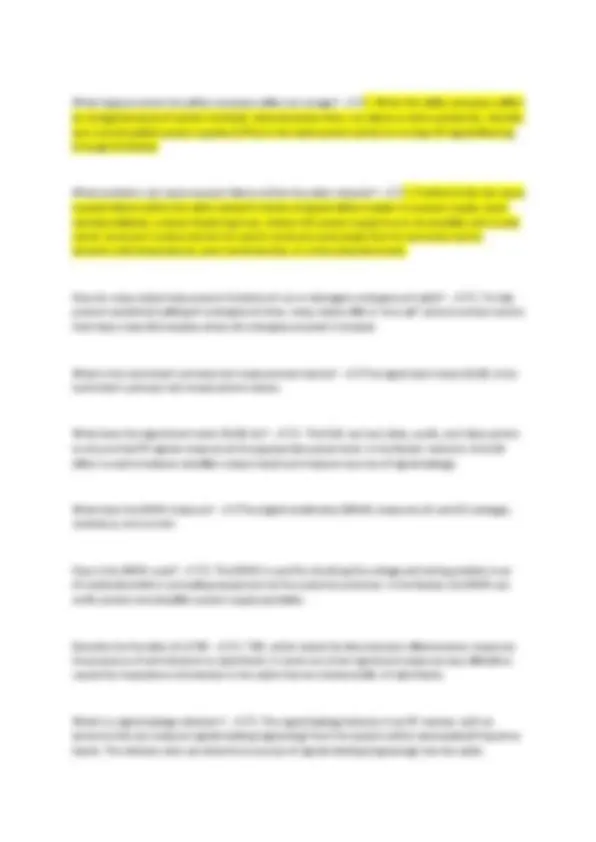



Study with the several resources on Docsity

Earn points by helping other students or get them with a premium plan


Prepare for your exams
Study with the several resources on Docsity

Earn points to download
Earn points by helping other students or get them with a premium plan
Community
Ask the community for help and clear up your study doubts
Discover the best universities in your country according to Docsity users
Free resources
Download our free guides on studying techniques, anxiety management strategies, and thesis advice from Docsity tutors
1. What are the two predominant types of network architectures? - ✔✔coaxial cable tree-andbranch and hybrid fiber/coax (HFC). How does the passband signal differ between the two network architectures in the downstream path? - ✔✔supplies a downstream passband signal of up to 50-550 MHz. then the feeder in an HFC network typically transmits the downstream signal in a 50-750 MHz, 50-860 MHz, or even 50-1,000 MHz (1 GHz) passband What is the reason for the difference in the passband signal between the two network architectures? - ✔✔Fiber can carry a much greater bandwidth over light frequencies before signals degrade beyond tolerable limits than can coax over radio frequencies.
Typology: Exams
1 / 3

This page cannot be seen from the preview
Don't miss anything!


Where does the express feeder end? - ✔✔1. The express cable ends at the first distribution amplifier, where the feeder cable begins its journey to distribution taps. What factors can affect attenuation? - ✔✔1. Attenuation decreases when the size of the coax increases. The attenuation increases when the cable must pass signals at higher frequencies. Temperature also can affect signal loss; for example, a 10°F rise in surrounding temperature causes a 1% rise in a cable span's attenuation compared to the cable's standard loss value. What can happen if the wrong connector is installed? - ✔✔1. Installing the wrong connector can have negative consequences in the reliability of the network and signal quality at the customer premises equipment (CPE). What are three main types of amplifiers in the feeder? - ✔✔1. The three main types of amplifiers used in the feeder are Bridger, distribution, and line extender amplifiers. What do distribution amplifiers do? - ✔✔Distribution amplifiers (also called mini Bridger's) boost the signal again and direct it toward other feeder routes What does a line extender amplifier do? - ✔✔1. The line extender amplifier extends the feeder line somewhat farther into the service area. What do passive devices add to the signal - ✔✔1. Passive devices add a factor called insertion loss to the signals (the attenuation between the input and output ports of the devices), which is a reduction in signal power and voltage. How do directional couplers and splitters differ? - ✔✔1. A directional coupler's role is just like an RF splitter's, except that the signals that pass through each of the two output ports are not equal amounts. What is insertion loss? - ✔✔1. Insertion loss is the signal loss between the tap's input port and its output port. The more customer tap ports a tap has, the higher its insertion loss. What does isolation identify? - ✔✔1. Isolation identifies the level of signal interference possible between any two individual ports at a specific frequency, with all other ports terminated. Isolation prevents undesired RF signals from one output port from interfering with desired signals on another output port. The higher the isolation value, the better the isolation between the ports